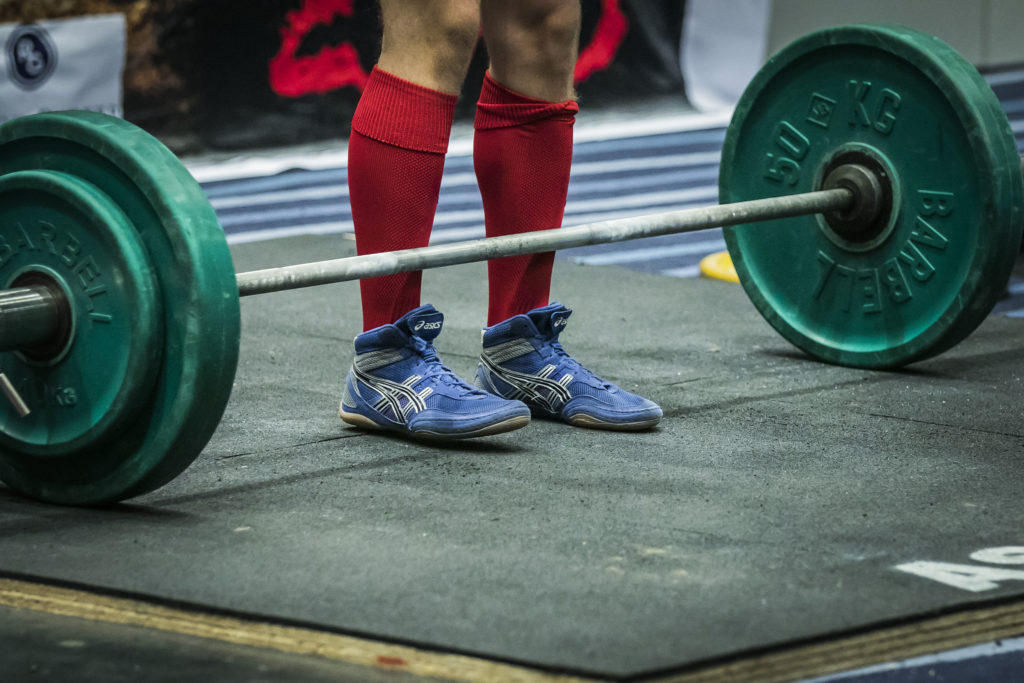I don’t know about you, but whenever I have squats or deadlifts on the itinerary it always takes me just a liiiiiitle longer to warm-up.

Copyright: spotpoint74 / 123RF Stock Photo
There are a lot of moving parts to performing each lift safely and at a high level; much more so than compared to upper body counterparts such as the bench press or chin-up/pull-up.
This is not to say upper body movements don’t require warming up or attention to detail, they do. However, when all else is equal I find upper body movements lend themselves to a little more of a lackadaisical approach compared to lower body movements. Admittedly, it’s 100% anecdotal on my end, but it’s more common to see people walk into a gym, mosey on over to the bench press area without much of a song and dance with a warm-up, and pretty much get right into the nuts and bolts of their workout than it is to see the same person walk in, start deadlifting, and not be leaving five minutes later because their spine just flipped them the middle finger.

Plus, lets be honest: if there’s ONE thing you’re going to omit from your training session for the day when you’re in a rush (or because it’s a Wednesday) it’s your warm-up. You skip it, I skip it, your friends skip it, there’s no point in pretending we’re all warming up 100% of the time. Heck, I’d be surprised if most people did it 50% of the time.
As a fitness professional the warm-up is a bit of a catch-22. On one hand I can’t deny it’s importance. People are too tight, too stiff, too loose, or 2 legit 2 quit.1 The warm-up serves as a fantastic way to hone in on any “correctives” that any one person may need to address whether it’s any of the above or inhibited glutes, immobile hips and t-spine, and/or general movement malaise. Moreover, the warm-up serves as a way to increase body temperature, joint lubrication, and CNS up-regulation.
It’s here, during the warm-up, we can attack movement dysfunction and better set people up for a productive training session.
On the other hand, people can be handicapped by the warm-up. As in…the warm-up becomes this drawn out, overly dramatic “thing” to the point where some people spend 45 minutes on a foam roller hitting every inch of their body and/or performing an inordinate amount of mundane correctives before they even touch a dumbbell or barbell. To which I am always quick to say:
“Get off the f***ing foam roller. That’s why you’re always hurt.”

Yep, foam rolling your forehead is the answer.
Nevertheless, I tend to fall on the “better to do it than skip it” side of the fence. Albeit something I have been toying with of late with my own training and that of my clients is using more combo or “hybrid” drills to help expedite the process.
Take a lower body day for example where squats or deadlifts are on the agenda.
Glute Bridge w/ Rotation
Key Notes
- Addresses both glute activation and t-spine rotation/mobility
- Careful not to go into excessive lumbar extension at the top. “Feel” your glutes fire and then make sure when you rotate to one side you move everything as one unit.
- You should feel a nice anterior hip stretch on the contralateral side (if you rotate towards the right, you’ll feel a slight stretch on the front side of the left hip).
1-Legged RDL to Cossack Squat
This is climbing the ladder as one of my “go to” hybrid drills as it accomplishes a lot.
Key Notes
- Try to get the backside as long as you can – reach both forward with your arms and back with the moving leg.
- Try to prevent any hip rotation – toe of moving leg should point towards the floor and to the midline.
- “Soft” knee on standing/supporting leg.
- Idea of Cossack squat is to sit BACK into the hips. ROM will be limited in some people, so don’t worry if you cannot get to the ground at first; use what ROM you do have available.
- Heel should be down and it’s okay to point the toes of the straightened leg up towards the ceiling.
- If you have to use your hands as support for the first rep or two or for the entire set, that’s fine. Eventually, the idea is to be able to perform with using your hands.
Bear Squat
Key Notes
- Start in a “deep squat” position. Push knees out with elbows to help get more hip abduction and make sure chest is UP or “tall.” T-spine extension is important.
- Walk out making sure not to “collapse” the shoulder blades. Try to push away from the floor. This will help with a little serratus activation.
- The walk out also helps with anterior core engagement (never a bad thing), and at the same time you’re also getting a fair bit of ankle (and big toe) dorsiflexion into the mix as well.
- Try not to allow your lower back to sag or torso to teeter-totter. Pretend as if there’s a bottle of water (or battery acid) on your back and you don’t want it to spill. Ouch.
- You can also up the ante by adding an overhead reach component before you “bear crawl” out, like so:
Just a Taste
There’s obviously an endless parade of exercises I could showcase here. But hopefully these give you a little taste of a few you can implement prior to a lower body session that’ll help speed up your warm-up yet target many of the problematic areas most people need to hit prior to hitting squats or deadlifts hard.
Give them a try and let me know what you think.
Комментариев нет:
Отправить комментарий